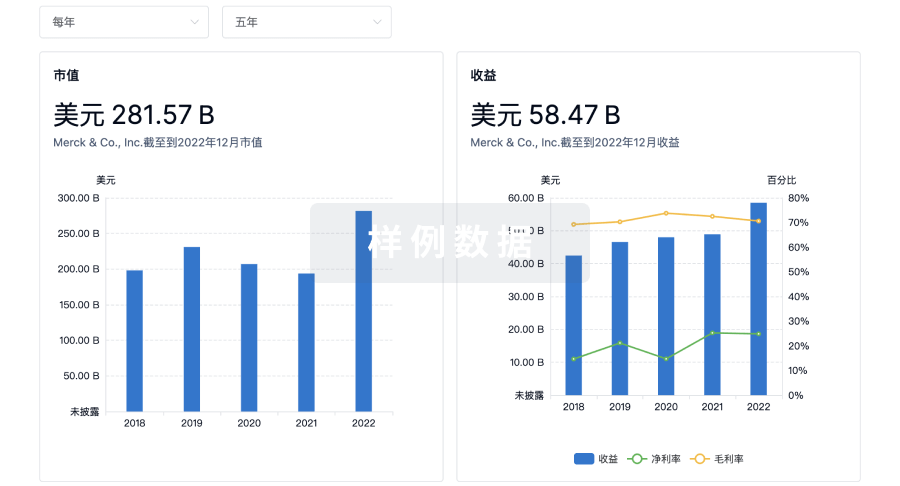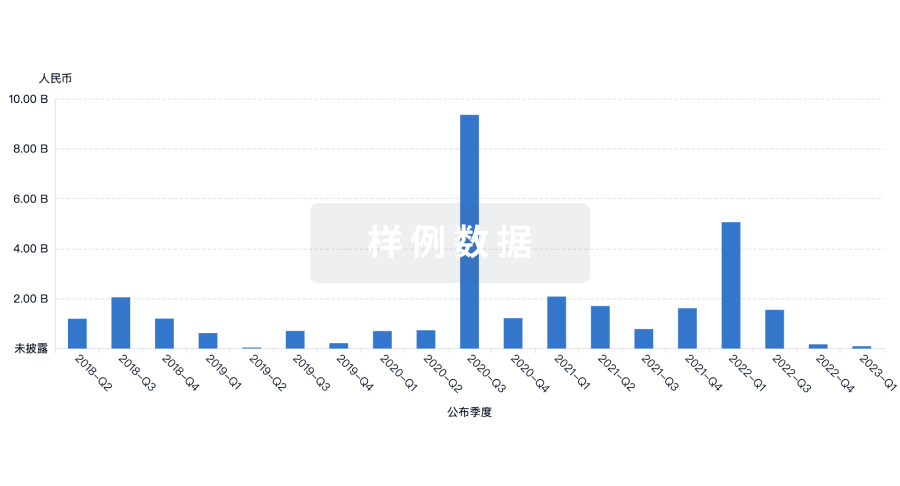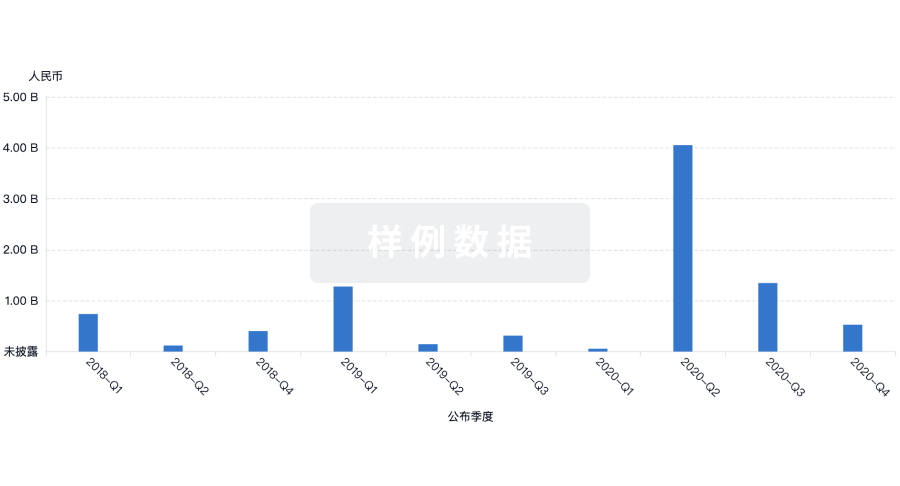预约演示
更新于:2025-12-09

Technische Universität Darmstadt
更新于:2025-12-09
概览
标签
肿瘤
其他疾病
感染
分子胶
小分子化药
生物药
疾病领域得分
一眼洞穿机构专注的疾病领域
暂无数据
技术平台
公司药物应用最多的技术
暂无数据
靶点
公司最常开发的靶点
暂无数据
| 排名前五的药物类型 | 数量 |
|---|---|
| 小分子化药 | 3 |
| 生物药 | 1 |
| 非降解型分子胶 | 1 |
| 未知 | 1 |
| 分子胶 | 1 |
关联
8
项与 Technische Universität Darmstadt 相关的药物作用机制 FKBP12配体 [+1] |
在研适应症 |
非在研适应症- |
最高研发阶段临床前 |
首次获批国家/地区- |
首次获批日期- |
作用机制 CD16a激动剂 [+2] |
在研适应症 |
非在研适应症- |
最高研发阶段临床前 |
首次获批国家/地区- |
首次获批日期- |
作用机制 EGFR调节剂 [+1] |
在研适应症 |
非在研适应症- |
最高研发阶段临床前 |
首次获批国家/地区- |
首次获批日期- |
100 项与 Technische Universität Darmstadt 相关的临床结果
登录后查看更多信息
0 项与 Technische Universität Darmstadt 相关的专利(医药)
登录后查看更多信息
12,013
项与 Technische Universität Darmstadt 相关的文献(医药)2026-01-01·Bioactive Materials
Cell-instructive microfibers enable programmable alignment of bioprinted hMSC
Article
作者: Lindner, N ; Schätzlein, E ; Keuper, L ; Blaeser, A ; Kötting, N ; Neuhäusler, A
Biofabrication of hierarchical tissues with features ranging various size ranges and controllable anisotropy remains a challenge in 3D-bioprinting. To overcome this hurdle, the application of multi-functional microfibers acting as cell-instructive bioink additive, recently gained particular attention. In this work, we investigate a microfluidic spinning process for the fabrication of collagen microfibers with adjustable diameters ranging from 5 to 50 μm. The thread was collected on a rotating winder and fragmented into microfibers of defined length (60-300 μm). By integrating microfiber fragments into an agarose-hyaluronan hydrogel, fine-tuning of its viscosity range (10-1000 mPa∗s), and thus the precise control of the extruded strands' diameter (0.3-1.4 mm) was achieved. While remaining strong shear-thinning behavior (n-value 0.6), E-modulus and yield stress were decreased in fiber-filled hydrogel, hinting at an interaction of agarose polymer chains with microfibers. Remarkably, the orientation of collagen microfibers could be directed either parallel or orthogonal to the printing path. This allows the biofabrication of hydrogel structures with adjustable domains of defined anisotropy. Finally, the fibers showed excellent biofunctionality both in 2D and 3D. Besides a high degree of alignment of individual cells along the microfiber axis (>80 % of cells), hMSCs built a dense, branched network in 3D. Moreover, PC12 and C2C12 were successfully differentiated in 2D and 3D. Specifically, neurite length was higher on smaller fiber diameters, even spanning non-adjacent clusters. Elongated, multi-nuclei myotubes were formed, indicating C2C12 differentiation. In summary, the work demonstrates the great potential of 3D-bioprinting in cross-scale organization of fragmented collagen microfibers.
2025-12-31·SCIENCE AND TECHNOLOGY OF ADVANCED MATERIALS
Understanding multicaloric effects in anisotropic magnets via a mean-field approach
Article
作者: Klunnikova, Yulia ; Liu, Wei ; Beckmann, Benedikt ; Karpenkov, Alex Y. ; Skokov, Konstantin P.
Materials with magnetic anisotropy can serve as a model object for exploring the multicaloric effect because their thermodynamic state alterations can be achieved either through the application of a magnetic field H or/and by mechanically rotating the sample in the magnetic field using torque τ. In such materials, the total entropy change __-mml:math xmlns:mml="http://www.w3.org/1998/Math/MathML"-__Δ S T Δ S m Δ S φ Δ S T Δ S m Δ S φ χ τ , H = ∂τ ∂H T , θ and __-mml:math xmlns:mml="http://www.w3.org/1998/Math/MathML"-__ χ H , τ = - ∂m ∂θ T , H for anisotropic magnetic materials and show that they satisfy the basic thermodynamic identities. We also confirmed that the total multicaloric effect in the material with magnetic anisotropy can be accurately expressed as the sum of the individual magnetocaloric effects induced by separate application of the H and τ, minus the magnetic entropy change arising from thermodynamic cross-coupling between the subsystems of the solid: __-mml:math xmlns:mml="http://www.w3.org/1998/Math/MathML"-__ Δ S T = Δ S T , τ H + Δ S T , H θ - Δ S coupling
2025-12-31·Nucleus
TET dioxygenases localize at splicing speckles and promote RNA splicing
Article
作者: Cardoso, M Cristina ; Bauer, Christina ; Bessonov, Sergey ; Soller, Matthias ; Zhadan, Andreas ; Singh, Deepanshu N D ; Weber, Jasmin ; Arnold, Roland ; Leonhardt, Heinrich ; Arroyo, Maria ; Dix, Thomas C ; Hastert, Florian D
The dynamic regulation of RNA metabolism plays a crucial part in cellular function, with emerging evidence suggesting an important role for RNA modifications in this process. This study explores the relationship between RNA splicing and the TET dioxygenase activity, shedding light on the role of hm5C (RNA 5-hydroxymethylcytosine), and TET proteins in RNA metabolism. Integrating data from mass spectrometry, AlphaFold structural modeling, microscopic analysis, and different functional assays, including in vitro splicing, TET proteins were found to regulate splicing. We show that TET1, TET2, and TET3 interact with the splicing factors U2AF1 and U2AF2. Interestingly, TET dioxygenases localize in splicing speckles in mammalian and Drosophila cells. TET speckles association was found to be RNA-dependent, but also rely on its interaction with splicing factors. Furthermore, cellular splicing assays revealed that all three TET proteins promote splicing efficiency independent of their catalytic activity. Interestingly, though, the oxidation of m5C to hm5C restores splicing efficiency in vitro. The latter highlights the regulatory role of cytosine modifications in RNA metabolism. These findings provide insights into the complex interplay between RNA modifications and splicing, suggesting a multifaceted role for TET proteins in RNA metabolism beyond their canonical function in the oxidation of 5mC in DNA.
2
项与 Technische Universität Darmstadt 相关的新闻(医药)2025-12-07
前言 (Preface)
想象力的工业化:当软件渴望理解生命
在工业软件的三大巨头中,达索系统(Dassault Systèmes)无疑是最具哲学家气质的异类。如果说 Ansys 致力于求解物理方程的精度,Synopsys 致力于编织硅基芯片的密度,那么达索系统则致力于构建一个“和谐的宇宙”。
从 1981 年为了设计“幻影”战机而诞生的 CATIA 代码开始,这家法国公司就不仅仅满足于制造工具。在过去的 45 年里,它完成了一场惊心动魄的蜕变:从一家辅助绘图的软件商,进化为一家管理产品全生命周期(PLM)的平台商,最终在 2025 年成为了一家试图解码人体奥秘的生命科学巨头。
本研究通过五张高维度的全景表格,试图穿透“3D体验(3DEXPERIENCE)”那令人眼花缭乱的营销术语,直抵达索系统的商业核心:
1. 产品图谱:看它如何用“罗盘”将 12 个品牌统摄于四大象限,覆盖从矿山开采到药物研发的每一环。
2. 技术溯源:揭示 MatrixOne 的数据库技术如何成为平台的脊梁,以及 Medidata 如何注入了生物学的基因。
3. 创始人追踪:观察“法国皇室”般的稳定权力结构,与被收购的“硅谷游侠”们如何博弈。
4. 资本演进:复盘其家族控股背景下,以 10 年为周期的长视主义并购逻辑。
5. 战略归因:剖析其“消灭文件”、“定义概念”与“万物孪生”的底层哲学。
我们试图回答一个核心命题:一家欧洲家族企业,是如何在强敌环伺的科技丛林中,通过“重新定义工业语言”,一步步将原本冰冷的工业软件,变成了连接产品、自然与生命的通用语言?
如果说 Ansys 是“物理世界的求解者”,Synopsys 是“数字芯片的编织者”,那么 Dassault Systèmes (达索系统) 则有着更大的野心——它试图成为**“全宇宙的虚拟孪生(Virtual Twin Experiences of the Universe)”**。
达索系统的产品架构与前两家截然不同。它不再仅仅是一堆工具的集合,而是被强行统一在一个极其庞大的操作系统——3DEXPERIENCE Platform 之下。其产品线按照著名的“罗盘(The Compass)”逻辑分为四大象限。
以下是基于 2025年12月 视角的 Dassault Systèmes 产品图谱(Product Atlas)。Dassault Systèmes 产品图谱 (2025 终极版)
核心架构: 所有产品均通过 3DEXPERIENCE 平台 进行数据互通,分为四大象限:3D 建模、仿真与制造、社交与协作、信息智能。1. 西象限:3D 建模应用 (3D Modeling Apps)
塑造虚拟世界的形状与材料
品牌 (Brand)
核心产品/模块 (Key Products)
核心能力 (Core Capability)
典型应用/行业备注CATIACATIA 3DEXPERIENCE
高端 CAD/系统工程皇冠上的明珠
。航空航天(波音/空客)与汽车(宝马/特斯拉)的绝对标准。不仅是画图,更是基于模型的系统工程 (MBSE)。
CATIA Magic
(No Magic)
系统建模 (SysML)
复杂的系统架构设计,源自收购 No Magic。
ICEM Surf
A级曲面设计
汽车外形设计的顶级曲面工具。SOLIDWORKSSOLIDWORKS Desktop
主流 CAD
全球用户量最大的机械设计软件,主要面向中端市场及供应链。
3DEXPERIENCE Works
云端 CAD
SOLIDWORKS 的云原生版本,打通设计与制造。GEOVIASurpac
矿山规划
地质建模与采矿工程。
Minex
沉积层建模
煤矿及其他层状矿床的勘探与规划。
Whittle
露天矿优化
战略性矿山规划与经济分析。BIOVIADiscovery Studio
生命科学建模
分子建模、蛋白质模拟,用于药物发现。
Materials Studio
材料科学
电池材料、合金、聚合物的原子级模拟。
Pipeline Pilot
科学信息学
实验室数据管理与科学工作流自动化。2. 南象限:仿真与虚拟现实 (Simulation & V+R)
验证虚拟世界的功能与生产
品牌 (Brand)
核心产品/模块 (Key Products)
核心能力 (Core Capability)
典型应用/行业备注SIMULIAAbaqus
非线性有限元 (FEA)
结构仿真的黄金标准,特别擅长处理橡胶、碰撞等高度非线性问题。
CST Studio Suite
电磁仿真
源自收购 CST。5G、天线、电磁兼容性 (EMC) 分析。
PowerFLOW
空气动力学 (CFD)
源自收购 Exa。基于格子玻尔兹曼方法 (LBM) 的高精度流体,汽车风阻模拟标准。
XFlow
粒子流体 (CFD)
擅长自由液面(如涉水、齿轮箱润滑)模拟。
Simpack
多体动力学
机械系统(如列车、风机)的运动学分析。
fe-safe
疲劳分析
结构寿命预测。DELMIADELMIA Digital Mfg
数字化制造
虚拟工厂仿真、人体工程学、机器人路径规划。
DELMIA Quintiq
供应链优化
复杂的物流、排程与计划优化(SCP)。
DELMIA Apriso
制造运营管理 (MOM)
工厂车间执行系统 (MES) 与运营管控。3DEXCITEDELTAGEN
高端可视化
将 CAD 数据转化为照片级逼真的营销素材(VR/AR)。3. 东象限:信息智能应用 (Information Intelligence)
连接数据与临床试验
品牌 (Brand)
核心产品/模块 (Key Products)
核心能力 (Core Capability)
典型应用/行业备注MEDIDATARave EDC
电子数据采集生命科学板块的核心
。全球大多数临床试验数据的管理平台。
Medidata AI
临床数据分析
利用历史临床试验数据优化新药研发流程。
Patient Cloud
远程医疗
以患者为中心的移动端数据采集。NETVIBESExalead
企业搜索与索引
对企业海量数据进行索引和语义搜索。
Sourcing & Standardization
零部件标准化
AI 驱动的供应链零部件去重与标准化管理。4. 北象限:社交与协作 (Social & Collaborative)
管理全生命周期的数据
品牌 (Brand)
核心产品/模块 (Key Products)
核心能力 (Core Capability)
典型应用/行业备注ENOVIAPLM Backbone
也就是 ENOVIA企业的脊椎
。负责 BOM 管理、变更管理、配置管理。
3DEXPERIENCE Platform
基础架构
实际上是 ENOVIA 在底层支撑整个平台的单一数据源 (Single Source of Truth)。CENTRIC PLMCentric PLM
消费品 PLM独立运营
。专门针对时尚、零售、快消品的 PLM,市场占有率极高。3DSwymCommunities
社交协作
类似于企业内部的微信/Slack,但与 3D 模型深度集成。关键洞察 (Key Insights for 2025)
1. "从机械到生命" (From Things to Life):观察图谱你会发现,MEDIDATA (生命科学) 和 BIOVIA (材料/生物) 的权重在 2025 年极高。达索系统不再只是一家“造飞机汽车”的公司,它现在是全球最大的临床试验数据公司之一。这是它与 Ansys/Synopsys 最大的区别。
2. "以平台消灭工具" (Platform vs. Tools):Ansys 和 Synopsys 倾向于通过接口连接不同的工具(Connect),而达索系统的逻辑是**“消灭文件”。在 CATIA 和 SIMULIA 之间,理论上不需要转换文件格式,它们都在操作数据库中的同一个对象。这种以数据为中心 (Data-Centric)** 的架构是其 3DEXPERIENCE 平台的核心护城河。
3. "Centric 的特权":在所有品牌中,只有 CENTRIC PLM 保持了相对独立的“外挂”状态。这是因为快消行业的节奏与重工业完全不同,强行并入 3DEXPERIENCE 可能会“水土不服”。
4. "仿真全家桶":虽然 SIMULIA 的名气不如 Ansys 响亮,但通过收购 CST (电磁) 和 Exa (流体),SIMULIA 实际上已经构建了仅次于 Ansys 的多物理场能力,且在非线性结构 (Abaqus) 领域拥有绝对统治力。
这是达索系统 2025 年的产品全貌。接下来,我们可以进入 技术溯源维度,去看看这些庞大的品牌最初是从哪里来的。达索系统的技术溯源维度分析。
与 Synopsys 这种“硅谷猎手”式的技术拼图不同,达索系统的技术溯源呈现出一种“皇室联姻与领土扩张”的特征。它的起源是高贵的(航空航天),随后的每一步大动作(如收购 SolidWorks, MatrixOne, Medidata)都是为了建立一个新的“诸侯国”(Brand),并最终统一在 3DEXPERIENCE 的王旗之下。
表格说明:
1. 时间基准:2025年12月。
2. 品牌架构:达索系统以 12个品牌 (Brands) 管理产品,表格将按品牌归类。
3. 货币单位:由于达索是法国公司,部分早期收购以欧元 (€) 结算,后期大额收购多以美元 ($) 结算,表格中会注明。Dassault Systèmes 全产品图谱:技术溯源与身世背景表 (2025版)
品牌 (Brand)
核心产品/技术
核心功能
原所属公司 / 技术来源
收购/发布时间
收购金额
历史背景与核心人物 (Founders & Origins)CATIACATIA V5/V6
高端 CADDassault Aviation
(Internal)
1981年 (分拆)
-皇室血统
。最初是达索航空为了设计 Mirage (幻影) 战斗机而开发的内部工具(因为当时的 CADAM 只能画 2D)。核心人物:Francis Bernard (达索系统首任 CEO),被称为“CATIA 之父”。
ICEM Surf
A级曲面ICEM Technologies
2007年
未披露
源自大众汽车 (Volkswagen) 内部开发的曲面工具,是汽车外形设计的绝对标准。
Magic (No Magic)
MBSE 系统建模No Magic
2017年
未披露
位于美国的 SysML 建模领导者,补全了 CATIA 在系统工程 (Cyber-systems) 的能力。SOLIDWORKSSOLIDWORKS
主流 3D CADSolidWorks Corp.
1997年
3.10 亿美元达索史上最成功的防御性收购
。Jon Hirschtick (MIT背景) 创立了 SolidWorks,试图用 Windows PC 颠覆高端 CAD。达索将其买下作为中端防线,保持独立运作多年。SIMULIAAbaqus
非线性 FEAHKS
(Hibbitt, Karlsson & Sorensen)
2005年
4.13 亿美元SIMULIA 的基石
。由三位布朗大学博士创立,解决了高度非线性(如橡胶、碰撞)的仿真难题。
CST Studio
电磁仿真CST
(Germany)
2016年
2.20 亿欧元
德国达姆施塔特工业大学背景。补全了 5G/电子仿真能力。
PowerFLOW
气动/流体Exa Corp.
2017年
4.00 亿美元
基于格子玻尔兹曼 (LBM) 方法的 CFD,无需画网格,是汽车风阻模拟的标准。
XFlow
粒子流体Next Limit Dynamics
2016年
未披露
西班牙公司,源自电影特效技术(RealFlow),擅长模拟飞溅的液体。
Simpack
多体动力学Simpack
(Germany)
2014年
未披露
源自德国宇航中心 (DLR),专门解决机械系统运动学问题。
fe-safe
疲劳分析Safe Technology
2013年
未披露
英国公司,专注于金属疲劳寿命预测。ENOVIAENOVIA (MatrixOne)
PLM 核心平台MatrixOne
2006年
4.08 亿美元平台的心脏
。现在的 3DEXPERIENCE 底层架构其实主要源自 MatrixOne 的技术,而非达索早期的 VPM。MatrixOne 使得管理海量异构数据成为可能。
SmarTeam
中端 PLMSmart Solutions
1999年
3500 万美元
以色列公司,主要配合 SolidWorks 销售。DELMIADELMIA (Robotics)
机器人仿真Deneb Robotics
1997年
1.05 亿美元DELMIA 的起源
。Deneb 是当时离线编程 (OLP) 和数字工厂仿真的领导者。
Quintiq
供应链规划Quintiq
(Netherlands)
2014年
2.50 亿欧元
解决极其复杂的运筹学问题(如航空公司排班、物流路径)。
Apriso
制造执行 (MES)Apriso
2013年
2.05 亿美元
让达索从“虚拟制造”真正落地到“车间执行”。BIOVIADiscovery Studio
生命科学/材料Accelrys
2014年
7.50 亿美元
Accelrys 自身就是一家整合了 MSI, Synopsys (Chemical) 等多家科学软件的公司。被收购后更名为 BIOVIA。MEDIDATARave EDC
临床数据采集Medidata Solutions
2019年58 亿美元达索史上最大单笔收购
。彻底改变了公司基因,使其成为生命科学巨头。创始人:Tarek Sherif & Glen de Vries (后曾乘坐蓝色起源火箭进入太空,不幸于2021年空难去世)。GEOVIASurpac / GEMS
采矿规划Gemcom Software
2012年
3.60 亿美元
加拿大公司,全球最大的采矿软件供应商。被收购后改名为 GEOVIA。3DEXCITEDELTAGEN
高端可视化RTT
(Realtime Tech)
2013年
~1.50 亿欧元
德国公司,专门为汽车行业提供照片级实时的 VR/AR 营销素材。CentricCentric PLM
时尚 PLMCentric Software
2018年
控股收购
硅谷公司,创始人 Chris Groves。它是唯一被允许保持高度独立运营(甚至保留原名)的品牌,因为其在快消/时尚界的统治力太强。关键技术溯源洞察 (Technical Genealogy Insights)1. "MatrixOne":被遗忘的幕后英雄
现在的用户打开 3DEXPERIENCE 平台,觉得界面很炫酷。但支撑这个平台数据流转的“脊梁”——也就是 ENOVIA 的核心,其实很大程度上源自 2006 年收购的 MatrixOne。
• 归因:达索早期的 PDM (VPM) 适合管理极其复杂的 CAD 文件(如飞机),但缺乏灵活性。MatrixOne 带来了基于 Web 的、灵活的业务对象模型,这成为了后来达索“消灭文件 (Zero File)”理念的技术基石。2. "SolidWorks":最成功的防御战
1997 年,以 Jon Hirschtick 为首的 MIT 团队用 SolidWorks 掀起了“基于 Windows 的 3D CAD”革命。
• 归因:达索当时面临一个选择:要么看着 SolidWorks 吃掉中低端市场,要么买下它。达索选择了买下(仅用 3.1 亿美元),并极其明智地允许其独立发展,不强制将其与 CATIA 融合。这创造了 CAD 历史上最大的现金牛(Cash Cow)。3. "Medidata":基因突变
2019 年豪掷 58 亿美元 收购 Medidata,是达索技术基因的一次剧烈突变。
• 归因:在此之前,达索处理的是“几何与物理”(金属、塑料)。Medidata 处理的是“统计与临床”(病人、药物)。这次收购让达索拥有了全球最大的临床试验数据库,使其能在 2020 年代提出“人体数字孪生 (Virtual Twin of the Human)”这一宏大愿景。4. "SIMULIA" 的拼图逻辑
与 Ansys 自研起家不同,SIMULIA 完全是“买出来”的:
• 结构靠 Abaqus (HKS)。
• 流体靠 Exa (LBM方法) 和 XFlow (粒子法)。达索很有趣,它几乎放弃了传统的 Navier-Stokes 网格流体(如 Fluent),而是押注了下一代的无网格技术(LBM/Particle),这非常符合其追求“设计仿真一体化”的口味,因为无网格技术对几何清理的要求更低。
这份表格揭示了达索系统如何从一家飞机设计软件商,通过“选准赛道 -> 吞并龙头 -> 品牌化封装”的路径,变成了今天的全宇宙虚拟孪生帝国。达索系统的创始人追踪维度分析。
与 Synopsys 创始人多为“硅谷风投客”不同,达索系统的核心权力结构呈现出极其稳定的“法国皇室风格”—权力交接非常有秩序(从 Bernard 到 Edelstenne 到 Charlès 再到 Daloz),且核心高管任期极长。
但对于被收购的品牌(尤其是美国公司),达索系统表现出一种“总督制”:它倾向于让被收购公司的创始人留任一段时间(作为封疆大吏),但最终这些具有硅谷基因的创业者大多会选择离开,去寻找下一个从 0 到 1 的机会。
特别说明 (2025年12月视角):
1. 权力交接:2024-2025年是达索系统历史上最重要的权力交接期。长期掌舵的 Bernard Charlès 退居二线,Pascal Daloz 正式接棒 CEO。
2. 最新变动:Centric Software 的传奇创始人 Chris Groves 刚刚于 2025 年 10 月卸任 CEO,退居顾问。Dassault Systèmes 全产品图谱:创始人追踪与去向表 (2025版)
品牌/产品
原所属公司
核心创始人 & 行业地位
创始人现状 (截至 2025.12)Dassault Systèmes
(集团本身)Dassault Aviation
分拆:1981年Francis Bernard
地位:
CATIA 之父。他在幻影战机的设计部门领导开发了 CATIA。工程软件界的活化石。Charles Edelstenne地位: 商业大脑。达索家族的财务总管,一手建立了达索系统的商业帝国。Francis Bernard
:已退休多年,安享晚年。Charles Edelstenne:仍担任 荣誉主席 (Honorary Chairman),是董事会的精神领袖。Group Leadership
(核心高管)-Bernard Charlès
地位:
执掌公司 30 年的灵魂人物。定义了“PLM”和“3DEXPERIENCE”两个时代。工程界的乔布斯式人物。执行董事长
。2024年1月,他将 CEO 职位交给 Pascal Daloz,自己专注于长期战略与董事会事务。SOLIDWORKSSolidWorks Corp.
成立:1993年Jon Hirschtick
地位:
麻省理工 (MIT) 该领域的传奇。他用 $3.1亿 卖掉 SolidWorks 后,又创立了云 CAD Onshape (被 PTC 收购)。连环创业/竞争对手
。他离开达索后创立的 Onshape 现在是达索的竞争对手 (PTC) 的一部分。他目前是 PTC 的 EVP。MEDIDATAMedidata
成立:1999年Tarek Sherif
& Glen de Vries地位: 将临床试验带入云端。Glen de Vries 是一位极具冒险精神的科学家。Tarek Sherif
:2024-2025年逐渐淡出达索管理层,转型为投资人 (Ryght)。Glen de Vries:已故。2021年曾乘坐蓝色起源火箭进入太空,不幸于同年死于私人飞机事故。Exa (PowerFLOW)Exa Corp.
成立:1991年Stephen Remondi
地位:
致力于流体仿真方法的革新(LBM方法)。新创业
。收购一年后 (2018) 离开达索。现为生物科技公司 Xsphera Biosciences 的创始人兼 CEO。QuintiqQuintiq
成立:1997年Victor Allis
地位:
荷兰人工智能博士。将复杂的运筹学算法商业化用于排程。新创业
。收购完成后离开。现为美国 Activote (政治科技应用) 的联合创始人。CentricCentric Software
成立:2004年Chris Groves
地位:
时尚 PLM 领域的绝对霸主。他争取到了 Centric 在达索内部极高的独立性。刚刚卸任
。2025年10月,他正式辞去 CEO 职位,转任高级顾问。Fabrice Canonge 接任 CEO。CSTCST AG
成立:1992年Prof. Thomas Weiland
地位:
达姆施塔特工业大学教授。有限积分技术 (FIT) 的发明者。学术界/退休
。典型的德国学术派创始人,收购后回归学术与顾问角色,未进行再次创业。AbaqusHKS
成立:1978年Hibbitt, Karlsson & Sorensen
地位:
三位布朗大学博士。解决了非线性力学的计算难题。早已退休
。公司于 2005 年被收购,三位创始人在收购后不久即功成身退。深度画像:两种截然不同的“物种”
通过这张表格,我们可以清晰地看到达索系统生态中两种完全不同的“生物”:
1. 法国总部的“守护者” (The French Guardians)
• 代表人物:Bernard Charlès, Pascal Daloz, Charles Edelstenne。
• 特征:超长待机。他们不是连环创业者,而是职业生涯几乎全部奉献给一家公司的“教父”。
• 风格:擅长顶层设计、哲学思考(“Virtual Twin of the Universe”)和极其长期的战略规划。
• 现状:2025 年,随着 Pascal Daloz 接任 CEO,这个群体刚刚完成了一次平稳的代际更替。Daloz 曾是 Medidata 收购案的主导者,他的上台意味着“生命科学”战略将进一步强化。
2. 被收购的“美国/硅谷游侠” (The Silicon Valley Rangers)
• 代表人物:Jon Hirschtick (SolidWorks), Tarek Sherif (Medidata), Chris Groves (Centric), Stephen Remondi (Exa)。
• 特征:无法被驯服。他们拥有极强的个人魅力和创业精神。达索系统通常会给他们 1-5 年的“锁定期”或“自治期”(Centric 甚至保持了 7 年独立 CEO)。
• 结局:他们最终都会离开。因为达索系统的中央集权文化(The 3DEXPERIENCE Platform)要求所有品牌必须在底层打通,这往往与创始人追求独立灵活的理念冲突。Jon Hirschtick 创立 Onshape 就是为了“革自己的命”,这在达索体系内是不被允许的。
3. 2025 年的特殊节点:Centric 的 Chris Groves
• Chris Groves 是一个特例。他成功地让 Centric 在达索内部保持了极其罕见的独立性(甚至保留了硅谷总部和独立销售团队)。他直到 2025年10月 才卸任,这在达索的收购史上是非常长寿的创始人任期。这或许标志着达索终于要开始对 Centric 进行更深度的“平台化整合”了。
这张表格生动地展示了达索系统是如何通过“以法式中央集权吸纳美式创新技术”来构建帝国的。达索系统的资本演进维度分析。
与美国同行(Ansys/Synopsys)不同,达索系统作为法国CAC40指数成分股,其资本运作带有浓厚的“欧洲保守主义”与“家族长远眼光”相结合的色彩。
它很少进行频繁的小型并购,而是习惯长时间积累现金,然后每隔 7-10 年进行一次“赌上国运”级别的超大并购(SolidWorks -> MatrixOne -> Medidata),通过剧烈的无机增长(Inorganic)强行拓展疆土,随后进入漫长的消化期(Organic)。
特别说明 (2025年12月视角):
1. 货币单位:达索系统财报以 欧元 (€) 结算。历史并购金额保留原交易货币(通常为美元)。
2. 财年:与自然年一致(12月31日截止)。
3. 上市地点:Euronext Paris (巴黎泛欧交易所)。曾在纳斯达克上市,但于 2008 年自愿退市以降低合规成本,专注于巴黎主板。
4. 数据范围:涵盖 1996 年 IPO 至 2025 年。Dassault Systèmes 30年全景回顾:财务、并购与资本成长表 (1996-2025)
财年 (FY)
核心收购 / 重大事件
总营收 (Revenue €)
Y/Y 增长
增长构成分析 (Organic vs Inorganic)
当年市值范围 (Market Cap)
备注1996IPO (上市)
Paris & Nasdaq
€0.23 B
-Organic
作为达索航空的子公司上市,主要收入依赖 IBM 销售渠道。
€1.0 - €1.5 B
此时主要产品仅为 CATIA。1997SolidWorks
€0.30 B
+28%Inorganic 拐点
。$3.1亿收购 SolidWorks。营收开始多元化。
€1.5 - €2.2 B
确立了高端(CATIA)+中端(SW)的双轨战略。1998Matra Datavision
€0.42 B
+38%Inorganic
。收购 Matra 的部分产品,扩充 CAD 市场份额。
€2.0 - €3.5 B
互联网泡沫前夕,增长强劲。2000Delmia
(Deneb)
€0.63 B
+19%Inorganic
。整合 ENEA/Deneb 成立 DELMIA 品牌,进入数字制造。
€4.0 - €6.0 B
-2002
-
€0.77 B
+3%Organic 停滞
。航空业受到 911 事件影响,高端 CAD 需求放缓。
€3.5 - €4.5 B
-2005Abaqus
€0.93 B
+16%Inorganic 驱动
。$4.13亿收购 Abaqus,成立 SIMULIA 品牌。
€4.5 - €5.5 B
正式进入仿真市场。2006MatrixOne
€1.16 B
+24%Inorganic 爆发
。$4.08亿收购 MatrixOne。营收突破 10亿欧元大关。
€5.0 - €6.5 B
获得了构建 V6 平台的核心 PDM 技术。2008Nasdaq 退市
€1.34 B
+5%战略收缩
。自愿从纳斯达克退市,仅保留巴黎上市。
€3.5 - €5.0 B
金融危机期间,通过成本控制维持利润。2010Exalead
(搜索)
€1.56 B
+20%Organic 复苏
。经济复苏带动 SolidWorks 销量大增。
€6.0 - €8.0 B
提出 "3DEXPERIENCE" 愿景雏形。2012Gemcom
(GEOVIA)
€2.03 B
+14%Inorganic
。$3.6亿收购 Gemcom,进入采矿业。营收突破 20亿欧元。
€9.0 - €11 B
股价开始进入长牛周期。2014Accelrys / Quintiq
€2.29 B
+13%Inorganic 大年
。连续收购 Accelrys ($7.5亿) 和 Quintiq (€2.5亿),布局科学与规划。
€12 - €15 B
确立了“科学公司”的新定位。2016CST
(电磁)
€3.06 B
+8%Organic 为主
。CST 补充了 SIMULIA,但整体增长靠 3DEXPERIENCE 平台迁移驱动。
€17 - €20 B
-2017Exa Corp.
€3.23 B
+6%Mixed
。$4亿收购 Exa,补齐流体仿真。
€20 - €25 B
-2018Centric PLM
€3.48 B
+8%Inorganic
。收购 Centric 控股权,进入快消时尚领域。
€25 - €35 B
市场给予高估值。2019Medidata
(巨型收购)€4.02 B+16%历史性并购
。$58亿美元 收购 Medidata。这是达索赌上未来的一战。
€35 - €40 B
股价因收购带来的债务压力短期承压。2020
(COVID-19)
€4.45 B
+11%Inorganic 支撑
。Medidata 全年并表。临床试验业务因疫苗研发激增,抵消了工业软件的下滑。
€38 - €45 B
Medidata 证明了其抗周期能力。2021
-
€4.86 B
+9%Organic 反弹
。工业需求复苏 + 临床业务持续增长。€65 - €75 B历史市值高点
(科技股牛市)。2022Diota
(AR)
€5.67 B
+17%Organic 强劲
。汇率有利 (美元走强) + 订阅制转型加速。
€45 - €55 B
加息导致估值回调,但业绩依然稳健。2023
-
€5.95 B
+5%Organic
。生命科学业务遭遇周期性回调 (COVID后效应)。
€45 - €50 B
营收逼近 60亿欧元。2024CEO 交接
€6.45 B (预)
~+8%Mixed
。Pascal Daloz 接任 CEO。重点在于整合与利润率提升。
€40 - €48 B
市场等待生命科学业务的二次加速。2025AI / 医疗深化~€7.0 B
(预)~+9%Organic 为主
。利用 AI (Generative Experience) 提升 ARPU 值。€50 - €60 B
稳固欧洲最大软件公司之一的地位。资本演进四部曲 (Strategic Evolution Phases)
达索系统的资本故事可以清晰地划分为四个阶段,每个阶段都由一次**“核弹级”收购**开启:
1. 机械设计时代 (1996 - 2005)
• 核心事件:1997年收购 SolidWorks ($3.1亿)。
• 资本逻辑:利用 IPO 筹集的资金,买下最大的潜在对手。这次收购是完美的“现金奶牛”投资。SolidWorks 带来的充沛现金流,支持了达索后续 20 年的扩张。
• 营收规模:2亿 -> 9亿欧元。
2. 平台化时代 (2006 - 2013)
• 核心事件:2006年收购 MatrixOne ($4.08亿)。
• 资本逻辑:为了摆脱对“文件”的依赖,达索必须拥有一个数据库内核。MatrixOne 的收购虽然当时看很贵,但它成为了后来 ENOVIA V6 和 3DEXPERIENCE 的技术地基。没有它,达索依然只是一个工具软件商,成不了平台商。
• 营收规模:10亿 -> 20亿欧元。
3. 科学化时代 (2014 - 2018)
• 核心事件:2014年收购 Accelrys ($7.5亿)。
• 资本逻辑:达索判断物理世界(汽车/飞机)的增长将放缓,必须寻找新大陆。他们选择了“微观世界”(分子/材料)。这次收购标志着达索从“工程软件”向“科学软件”跨越。
• 营收规模:20亿 -> 35亿欧元。
4. 虚拟孪生与生命时代 (2019 - 2025)
• 核心事件:2019年收购 Medidata ($58亿)。
• 资本逻辑:这是达索历史上最大、最冒险的一次赌博。交易金额超过了达索当时市值的 1/5。
• Inorganic 爆发:这笔收购直接让生命科学板块的收入占比从 <5% 跃升至 ~20%。
• 抗周期性:2020年疫情期间,当波音和空客停止采购 CAD 软件时,Medidata 的临床试验业务支撑了整个集团的财报。
• 营收规模:40亿 -> 70亿欧元。025 年的资本画像 (The Financial Profile)
• 独特性:与 Synopsys/Ansys 相比,达索系统的家族控股特征明显。达索家族 (Groupe Industriel Marcel Dassault) 依然持有约 40% 的股份和 >50% 的投票权。这意味着管理层(Charles Edelstenne / Bernard Charlès)可以无视华尔街的季度盈利压力,进行以 10年 为周期的超长期战略布局。
• 估值逻辑:
• CATIA/SolidWorks 提供了类似债券的稳定现金流(Cash Cow)。
• Medidata/SIMULIA 提供了高增长的故事(Growth Engine)。
• 市场通常给予达索系统比传统工业软件更高的溢价,因为它是稀缺资产——欧洲唯一能与美国科技巨头抗衡的软件公司,且垄断了生命科学与高端制造的数据入口。
通过这张表,你可以看到达索系统不是在“经营”一家软件公司,而是在“统治”一个不断扩张的虚拟领土。每一次资本出手,都是为了吞并一个新的“省份”(从机械省,到流体省,再到生命省)。达索系统战略归因维度的深度分析。
如果说 Ansys 的战略是“深耕物理”,Synopsys 的战略是“融合硅与系统”,那么达索系统的战略则是最具哲学色彩和宏大叙事的。它不满足于制造软件工具,而是试图“重新定义工业的语言”。
达索系统的核心战略逻辑可以概括为:“用概念定义市场,用平台消灭文件,用孪生覆盖万物。”
以下是基于 2025 年视角,结合其历史演进的战略归因分析表。Dassault Systèmes 战略归因矩阵:定义权与控制权的进化史 (1981-2025)
战略阶段 (Strategic Phase)
核心战略口号 (Core Slogan)
关键动作 (Key Actions)
增长属性 (Growth Type)
战略归因与底层逻辑 (Strategic Attribution)1. 数字化样机时代
(1981 - 1998)"3D Design"
(3D 设计)CATIA
的独立与迭代Organic (核心)逻辑:物理替代
。最早的目标很简单:用 3D 数字模型完全替代 2D 图纸和物理黏土模型(Mockup)。这是达索的技术原点。
收购 SolidWorks
($3.1亿)
Inorganic (防御)逻辑:降维防御
。面对 Windows PC 带来的低端颠覆,达索没有选择忽视,而是直接买下最大的颠覆者,构建了高端 (CATIA) 与中端 (SW) 的双重护城河。2. PLM 时代
(1999 - 2011)"Product Lifecycle Management"
(全生命周期管理)提出 "PLM" 概念Concept (定义)逻辑:定义赛道
。Bernard Charlès 发明了 "PLM" 这个词。通过定义这个概念,达索强行将竞争维度从“画图工具”提升到了“流程管理”,迫使对手(如 PTC, Siemens)跟随它的游戏规则。
收购 MatrixOne
($4.08亿)
Inorganic (基石)逻辑:数据霸权
。为了实现 PLM,达索必须掌控数据流。收购 MatrixOne 提供了基于 Web 的无文件数据库技术,为后来的平台化奠定了技术地基。3. 体验经济时代
(2012 - 2018)"3DEXPERIENCE Platform"
(3D体验平台)推出 V6 架构 / 平台化Organic (颠覆)逻辑:消灭文件 (Zero File)
。这是达索最激进的战略。它试图消灭 CAD 行业通用的“文件格式”壁垒,强制所有数据都在数据库(平台)中流转。这制造了极高的客户迁移成本和粘性。
收购 Accelrys, Quintiq, Exa
Inorganic逻辑:全流程拼图
。为了让平台不仅仅是个空壳,必须填入科学(Accelrys)、规划(Quintiq)和仿真(Exa)能力,证明平台能处理非几何数据。4. 生命与万物孪生时代
(2019 - 2025)"Virtual Twin of Humans"
(人体虚拟孪生)收购 Medidata
($58亿)Inorganic (豪赌)逻辑:第二增长曲线
。当波音和空客的数字化已接近饱和,达索必须寻找一个新的复杂系统。人体(Biology)被视为比飞机更复杂的“机器”。收购 Medidata 是为了获得这一领域的入场券(临床数据)。
Generative Experience
(AI)
Organic (进化)逻辑:数据变现
。利用 3DEXPERIENCE 积累的 40 年工业数据和 Medidata 的临床数据,训练垂直领域的 AI 模型,从“辅助设计”进化为“生成设计”。深度战略解码 (Strategic Decoding)1. "概念发明家":夺取定义的权力 (The Power of Definition)
达索系统最可怕的能力不是写代码,而是造词。
• 现象:它先后发明或重新定义了 DMU (Digital Mockup), PLM (Product Lifecycle Management), 3DEXPERIENCE, Virtual Twin (注意它不用 Industry 4.0 这种通用词,而是坚持用自己的词)。
• 战略归因:通过发明新词汇,达索系统成功地掌握了话语权。当波音或特斯拉的高管接受了“体验 (Experience)”或“孪生 (Twin)”这些概念时,他们实际上就接受了达索的价值观和产品逻辑。这是一种最高级的营销战略。2. "消灭文件":技术护城河的极致 (The Zero File Doctrine)
• 背景:传统的 CAD/CAE 流程是基于文件的(.prt, .asm, .step)。文件容易丢失、版本混乱、且难以协同。
• 战略归因:达索系统花费 10 年时间(2006-2016),强行将底层架构从**“基于文件”切换为“基于数据库对象”**(即 3DEXPERIENCE 平台)。
• 结果:
• 短期痛苦:很多老用户(如奔驰)因为迁移太难而反抗,甚至一度威胁要换软件。
• 长期垄断:一旦迁移成功,竞争对手(如 Siemens, Ansys)几乎不可能把数据“挖”走,因为没有文件可以导出。所有的数据都只是数据库里的一个个对象链接。这构成了达索最坚固的技术壁垒。3. "家族企业的长视主义" (The Long-Termism)
• 背景:达索家族持有 ~40% 的股份和 >50% 的投票权。
• 战略归因:这使得管理层敢于做**“10年期”的赌注**。
• 2006年买 MatrixOne,直到 2014年 V6 平台才成熟(忍受 8 年阵痛)。
• 2019年买 Medidata,当时华尔街大骂“看不懂、太贵”,但达索不在乎股价波动,它看的是 2030 年的生命科学市场。
• 对比:Ansys 和 Synopsys 是典型的美式公众公司,必须照顾季度财报,因此它们的收购往往更务实、更即时见效;而达索的收购往往具有极其超前的战略意图。4. "从波音到心脏":通用方法的平移 (Universal Methodology)
• 逻辑:达索的核心哲学是**“系统工程 (Systems Engineering)”**。
• 战略归因:达索认为,造一架飞机和治愈一颗心脏,在底层逻辑上是一样的。都需要建模、仿真、验证、闭环。
• 飞机有 BOM (物料清单),人体有 Genome (基因组)。
• 飞机有风洞实验,人体有临床试验。
• Medidata 的价值:达索收购 Medidata,本质上是想把在航空航天领域验证了 40 年的“系统工程方法论”,平移到生命科学领域。这不只是一次跨界,这是一次方法论的殖民。总结
达索系统的战略归因可以概括为:“一个拥有家族耐心的哲学家,用数据库技术消灭了文件,用话语权定义了行业,现在正试图用造飞机的逻辑去解码生命。”
至此,我们已经完成了对 Ansys、Synopsys 和 Dassault Systèmes 三大巨头的全维度(产品、技术、资本、战略、创始人)深度复盘。这三家公司分别代表了物理仿真、电子设计和系统工程的最高峰。结语 (Epilogue)
最后的协调者:在物质、生命与自然之间
当我们合上达索系统的研究案卷,我们看到的不仅仅是一个商业帝国的版图,更是一种试图“数字化一切”的野心。
与其他竞争对手相比,达索系统最显著的特征在于它的“长视主义(Long-termism)”。在达索家族的掌控下,这家公司敢于做那些华尔街看不懂、但十年后会被证明是真理的事情——比如花费十年时间强行消灭 CAD 文件,比如花费 58 亿美元豪赌临床数据。
2025 年的达索系统,已经站在了一个新的十字路口:它成功地将造飞机的逻辑(系统工程)平移到了造汽车(特斯拉),现在正试图将其平移到造人(生命科学)。
• 在它的平台上,波音公司的工程师正在设计下一代碳中和飞机;
• 在它的平台上,医生正在名为“Living Heart”的虚拟心脏上模拟手术方案;
• 在它的平台上,城市规划者正在推演新加坡的数字孪生城市。
通过“虚拟孪生(Virtual Twin)”,达索系统打破了虚拟与现实的屏障。它告诉我们,工业不再是自然的对立面,只要通过精确的模拟与优化,产品、自然与生命可以达成一种动态的和谐。
至此,我们的三大巨头研究(Ansys, Synopsys, Dassault Systèmes)全部完成。
• Ansys 让我们看见了物理的深度;
• Synopsys 让我们看见了算力的密度;
• Dassault Systèmes 让我们看见了系统的广度。
这三家公司共同构成了现代人类文明的数字底座。只要人类还在通过制造工具来改造世界,它们的故事就永远不会结束。
模拟世界:Ansys 五十五年商业帝国兴衰与产品全景考 (1970-2025)
模拟世界:Ansys 五十五年商业帝国兴衰与产品全景考 (1970-2025)
工业软件本体级分类研究综述(EDA/CAD/CAE)- 前言 10万字级综述
工业软件本体级分类研究综述(EDA/CAD/CAE)- 第一部分
工业软件本体级分类研究综述(EDA/CAD/CAE)- 第二部分
2025工业软件全景研究 -(基于七大的研究,含详细表格)
并购
2025-09-26
·医药代表
继昨日(9 月 25 日)默克集团官宣后,今日默克中国也宣布了这个消息——默克集团首席执行官的接任者已经确定。
据默克官方公告,默克合伙人董事会宣布任命毕康明(Kai Beckmann)为默克集团候任执行董事会主席兼首席执行官,他将于 2026 年 5 月 1 日正式接替葛丽鹤(Belén Garijo)。
默克表示,为确保平稳过渡,葛丽鹤将继续担任现职至任期结束,同时毕康明即日起出任默克集团副首席执行官,并在继任者就位前继续兼任电子科技业务首席执行官。
▌ 默克换帅,老将接力
葛丽鹤(Belén Garijo)加入默克 15 年,曾执掌医药健康业务 6 年,2021 年 5 月,被晋升为默克集团执行董事会主席兼首席执行官,接任当时的默克集团首席执行官欧思明(Stefan Oschmann)职务,成为默克三百多年历史上首位女性 CEO(见 MRCLUB 历史消息:默克迎来史上首位女性首席执行官!)。
葛丽鹤(Belén Garijo)
而接任者毕康明(Kai Beckmann),资历更为深厚,是一名“老默克”。
毕康明(Kai Beckmann)
简单来说,毕康明在默克集团已服务 36 年,从一名信息技术系统顾问起步,先后负责 IT、行政、业务转型及区域管理等多个重要岗位,逐步成长为深谙公司运作与全球业务的资深领导者。如今,他将接任执行董事会主席兼首席执行官,成为引领默克未来发展的掌舵人。
一路历练、不断积累,他以数十年的坚守,走出了一条跨国药企内部晋升至最高职位的典范之路。
这里也介绍一下他的履历。
毕康明毕业于德国知名理工大学达姆施塔特工业大学计算机科学专业,后获达姆施塔特工业大学经济学博士学位。
他于 1989 年加入默克集团,成为默克德国总部的一名普通的信息技术系统顾问,四年半后,他被晋升为默克系统与数据中心管理主管。
其后又历任默克 IT 基础设施负责人、信息管理与咨询负责人职务。
2004 年 7 月,他被任命为默克新加坡及马来西亚董事总经理,2007 年 2 月,又被任命为默克集团首席信息官(CIO)。
2011 年 4 月起,他成为默克执行董事会的成员,就任默克集团首席行政官(CAO),统筹人力资源、信息技术,并负责集团总部和达姆施塔特最大工厂的管理工作。
毕康明于 2017 年就任默克高性能材料业务首席执行官,在他的领导下,目前该业务已全面转型为电子科技业务,成为和生命科学、医疗健康并列的默克三大业务之一。
自 2021 年 3 月起,他担任默克电子科技业务首席执行官。
除在默克集团任职外,毕康明还担任德国联邦印刷集团监事会主席、德国雇主协会联合会(BDA)副主席。2017 年至 2024 年期间,他曾执掌德国化学雇主协会联合会(BAVC)。
▌ 2025,默克高管重组年
今年多家跨国药企高管变更,默克也不例外,自今年 2 月份以来宣布领导层变动以来,6 月 1 日起,丹卓航(Danny Bar-Zohar)正式出任默克医药健康业务首席执行官,Jean-Charles Wirth 正式就任默克生命科学业务新一任首席执行官(见 MRCLUB 历史消息:默克医药健康迎来新掌门人)。
丹卓航(Danny Bar-Zohar)
Jean-Charles Wirth
9 月 2 日,默克公司宣布,任命大卫·温里奇(David Weinreich)为默克医药健康业务部门全球研发主管兼首席医学官(见 MRCLUB 历史消息:默克确定首席医学官)。
大卫·温里奇(David Weinreich)
不到一月,默克集团首席执行官的继任人选也已揭晓,人事交接拉开帷幕。
葛丽鹤卸任,毕康明接棒CEO
如果说默克现任 CEO 葛丽鹤代表着变革与突破,那么,毕康明更多的是厚积与传承,默克的人事变动,不仅仅是简单的领导层更替,更折射出这家百年药企在全球竞争格局中的下一程的布局和发力。
毕康明如何书写默克的下一个五年、十年,大伙儿不妨拭目以待。
相关阅读:
第六批耗材国采,来了!
五大重磅炸弹药物,2025销售大滑坡
超46亿元!国药集团又拿下一药企
刚刚,又有两个药品被停采
终年56岁,硕世生物副总突发疾病去世
被前医药代表举报回扣,吉利德这回赢了
“好好呼吸”婴幼儿呼吸道健康科普项目启动
一跨国药企宣布,退出27个市场
22名医药人被罚!全在这家药企…
《国谈药品管理专家共识》征求意见
刚刚,A司按下“升级键”,信息量很大
确认了!BMS出售合资药企,不是退出
超14亿!又一跨国药企出售中国市场业务
知名药企官宣,补税超三千万
告别GSK,齐欣执掌奥利佳
百济神州全国多部门热招中
第十一批国采《采购文件》下载
钟睒睒巨资入局,山西女首富就任总经理
超两百亿!罗氏买买买,员工也转入
重磅合作!医学界×腾讯
今天,多家药企高管大变动!
刚刚,又一省医保局原副局长被查
9月更新版!10个重点监控药品名单
超500亿!辉瑞强势入局减肥赛道
严查异常处方!国家医保局启动百日行动
最新药企内部招聘(9月25日更新)
MRCLUB原创作者招募中
数十万精准会员每日阅读,助您快速提升个人品牌,扩大在医药行业及社会化媒体的影响力!(详情请访问网站http://wemr.club)
医药代表 伴您成长!
高管变更
100 项与 Technische Universität Darmstadt 相关的药物交易
登录后查看更多信息
100 项与 Technische Universität Darmstadt 相关的转化医学
登录后查看更多信息
组织架构
使用我们的机构树数据加速您的研究。
登录
或

管线布局
2025年12月17日管线快照
管线布局中药物为当前组织机构及其子机构作为药物机构进行统计,早期临床1期并入临床1期,临床1/2期并入临床2期,临床2/3期并入临床3期
药物发现
1
7
临床前
其他
4
登录后查看更多信息
当前项目
登录后查看更多信息
药物交易
使用我们的药物交易数据加速您的研究。
登录
或

转化医学
使用我们的转化医学数据加速您的研究。
登录
或

营收
使用 Synapse 探索超过 36 万个组织的财务状况。
登录
或

科研基金(NIH)
访问超过 200 万项资助和基金信息,以提升您的研究之旅。
登录
或

投资
深入了解从初创企业到成熟企业的最新公司投资动态。
登录
或

融资
发掘融资趋势以验证和推进您的投资机会。
登录
或

生物医药百科问答
全新生物医药AI Agent 覆盖科研全链路,让突破性发现快人一步
立即开始免费试用!
智慧芽新药情报库是智慧芽专为生命科学人士构建的基于AI的创新药情报平台,助您全方位提升您的研发与决策效率。
立即开始数据试用!
智慧芽新药库数据也通过智慧芽数据服务平台,以API或者数据包形式对外开放,助您更加充分利用智慧芽新药情报信息。
生物序列数据库
生物药研发创新
免费使用
化学结构数据库
小分子化药研发创新
免费使用